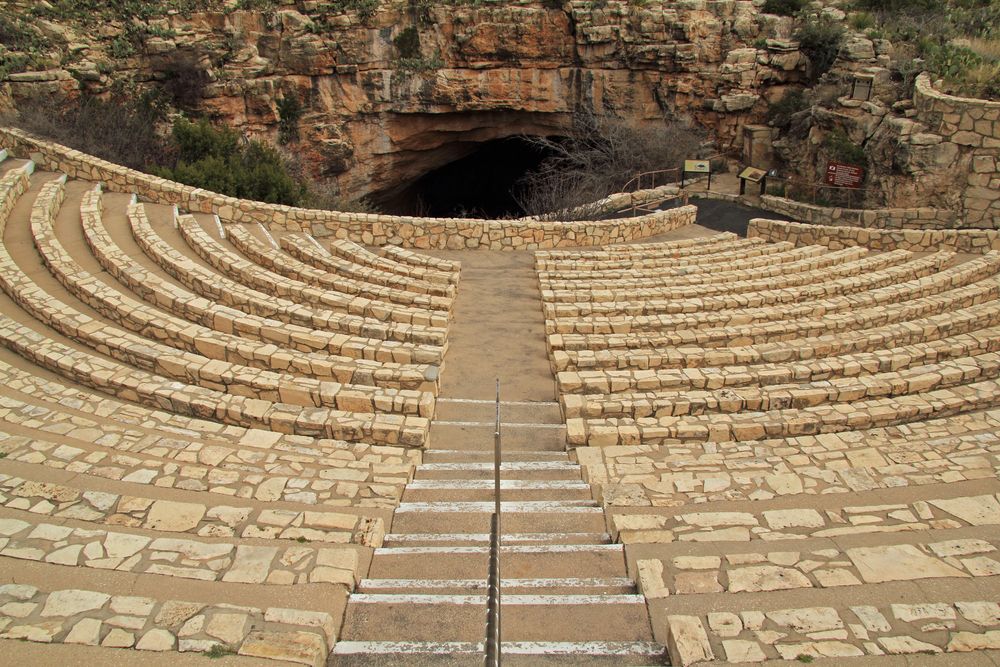Carlsbad Caverns National Park has a population of hundreds of thousands of Brazilian free-tail bats that exit the cave through the natural entrance at civil twilight from mid-April to mid-October. The outflight can last several hours.
The park allows visitors to sit in the outdoor amphitheatre at the natural entrance to watch the bats exit the cave. The Natural Entrance is about a five minute walk from the visitor center. Seating is first-come, first-served and you do not need reservations.

What time do the bats come out of Carlsbad Caverns?
The bats typically leave at 28 minutes past sunset, known as civil twilight. Depending on a number of factors. The bats typically return to the cave entrance between 4 and 6 AM, with the peak number of bats entering at dawn.
How many bats fly out of Carlsbad Caverns?
In the summer, between 200,000 and 500,000 bats leave the cave each evening. During migration, the bat population can reach over one million bats. Migration usually occurs in mid-to-late April. August and September are usually good times to see lots of bats because there are both the babies from the year as well as migrating bats from further north.
What type of bats is Carlsbad Caverns known for?
Carlsbad Caverns is known for its bats. There are 17 bat species in the park.
The large colony of Brazilian free-tailed bats is the best known. They are a medium sized bat native to the Americas which is considered one of the most abundant mammals in North America. They roost in huge numbers in only a few locations in the world. They weigh about 1/2 oz. each and have a wingspan of approximately 11 inches. The free-tailed bats are insectivores that hunt using echolocation. They typically eat moths and beetles.
There are two other bat species regularly found in Carlsbad Cavern. Cave myotis and fringed myotis bats usually roost elsewhere in the cavern and fly 1.5 miles to exit via the Natural Entrance.
Not all of the bats in the park roost in the caves. Two types of bats in the park roost in trees (eastern red bats and hoary bats). The canyon bats roost on rock cliffs and in cracks.
Has White Nose Syndrome spread to Carlsbad Caverns?
White nose syndrom has impacted bat populations across the country but has not yet spread to New Mexico. It has been found in 33 states including neighboring states such as Oklahoma and Texas, however. It has had a devastating impact on bat populations and the National Park Service as well as other federal agencies have been implementing measures to attempt to limit the spread.
